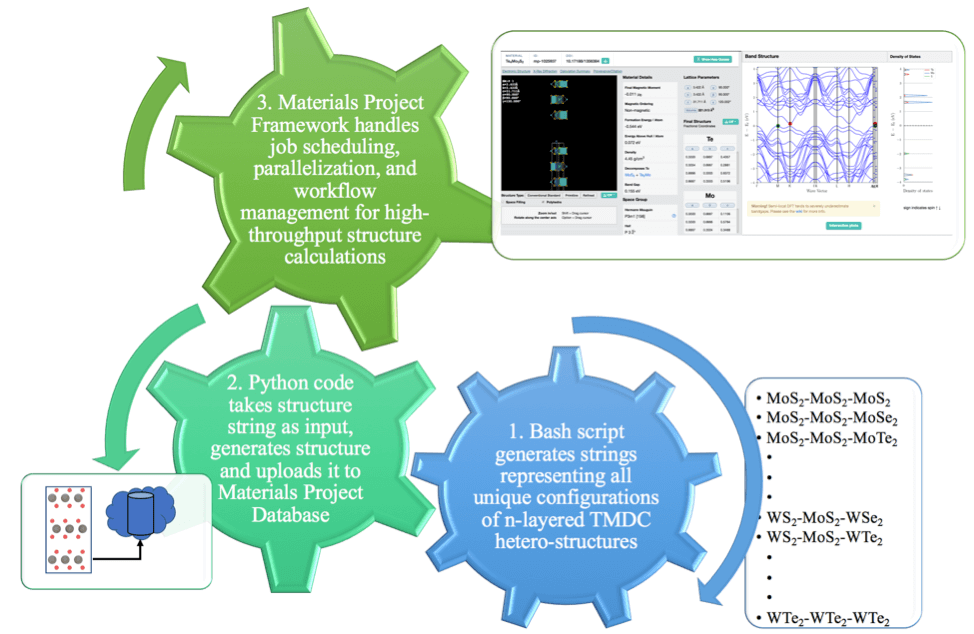Layered Heterostructures on the Materials Project Database
An automated workflow was developed to rapidly generate all unique n-layered hetero-structures and upload the structures to the Materials Project Database for property computation. Layers are made from one of six compositions: MoS2, MoSe2, MoTe2, WS2, WSe2, or WTe2. The workflow begins with a bash script that generates a character string representing each unique layered structure, which is fed to a python code that generates the structure and uploads it to the Materials Project Database, using the PyMatGen Python library, for property computation. The figure below shows a schematic of the workflow.

High-throughput PyMatGen code may be found at our Github page.
Thus far, all 1-, 2-, 3-, and 4-layer hetero-structures have been uploaded and had their properties computed. They may be found in the table below:
| Materials Id | Formula | Spacegroup | Formation Energy (eV) | E Above Hull (eV) | Band Gap (eV) | NSites | Density (gm/cc) | Volume |
|---|
This data was subsequently used as training data for an active learning process for accelerated design of thermoelectric materials using such heterostructures. More details on this work can be found in the references listed below.
Bassman, L., Rajak, P., et al., npj Computational Materials 4, 74 (2018).
Bassman, L., Rajak, P., et al., MRS Advances 3, 397-402 (2018).
Published on January 29th, 2019
Last updated on February 15th, 2021

